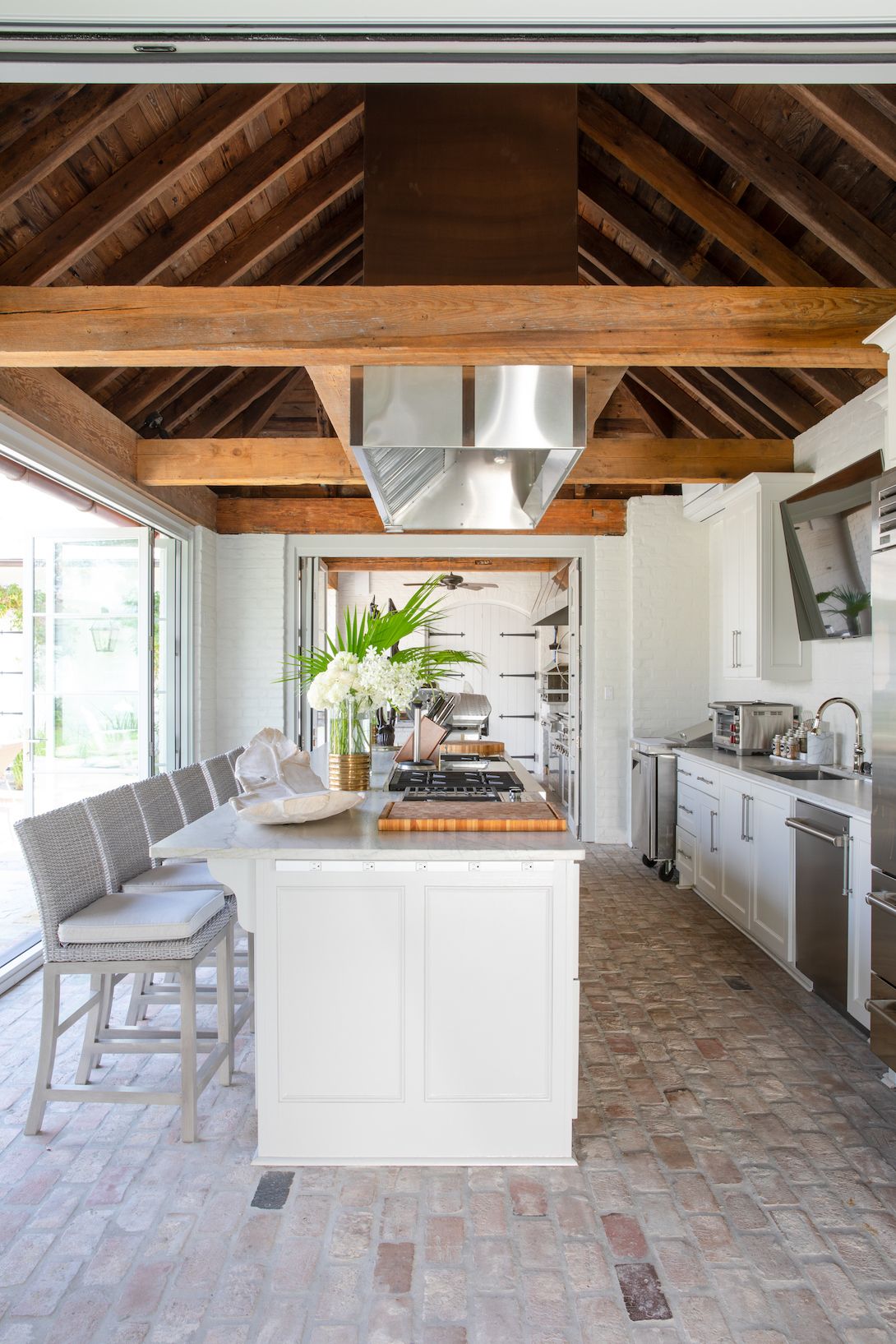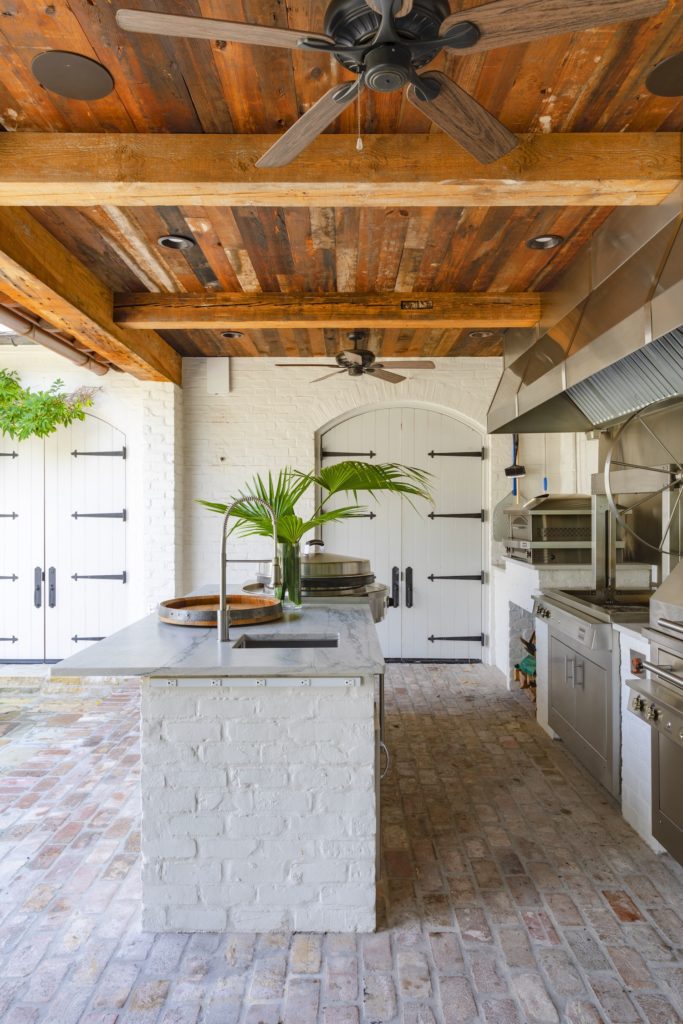
The right outdoor kitchen design will have you cooking with fire
The final days of July shout the last hurrah of summer—a time for beach vacations, back-to-school shopping and barbecues. For those lucky enough, it also means an opportunity to take advantage of an outdoor kitchen—a small change of scenery that can become a getaway with the right design, where a plate of small bites can be passed before a leap into a pool and a shade can be drawn against the setting sun. But there’s more to the magic than a simple collection of covered appliances—just take it from Lionel F. Bailey, the architect responsible for projects like the Stabiler home featured in our October 2019 issue.
“One thing you look at when designing an outdoor kitchen is its orientation,” he says. “We try to orient outdoor living areas so that they’re not facing due west, which would make the heat of sunset just burst full force into the space. Instead we aim for north or east, and if that’s not possible, we’ll sometimes put opera valance blinds on either side of the fireplace, which can be opened up to let the breeze blow through.”
Retractable sun shades or drop-down screens are also an option, and can be recessed into vertical columns for discrete storage and protection against extreme temperatures, insects and rain.
“You can even pump a little air conditioning into the space to cool it off a bit,” says Bailey. “It can be a separate unit apart from the house which you can turn on and off just as you need it.”

As far as appliances go, Bailey has some firsthand knowledge on some of the best brands around.
“I’m working on my own personal house’s outdoor kitchen right now, and we’re using Bull Outdoor Products, which is a good choice at a good price point,” he says. “There’s another brand called Kalamazoo which is more high end and really good. That’s what we used in the Stabiler project.”
Wayne Stablier is a restaurant owner, after all, and Bailey says he wanted a certain quality level in the outdoor kitchen equipment—tools that could manage unique techniques and different cooking experiences. A typical client might not need so much specification, says Bailey, but a good architect will always work with clients to find out exactly what suits their lifestyle.
Ample space is also something to take into account.
“If you’re talking about a full outdoor living space, we like it to be anywhere from 12 to 18 feet wide and as long as 16 to 30 feet,” he says. “You don’t want to feel crowded in.”
But the key thing, really, is making integration seamless.
“When you’re adding an outdoor kitchen onto an existing house, you need to work with what’s there already, and integrate it into the yard or pool, for example,” he says. “Sometimes we end up doing a separate structure away from the house, so it’s more like a destination you go to.”
Tour the indoor spaces of this home in this story from the inRegister archives.











